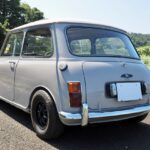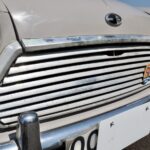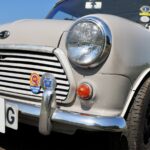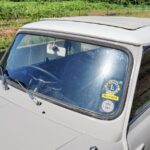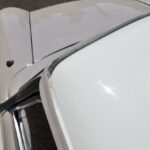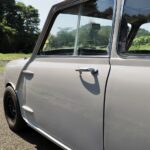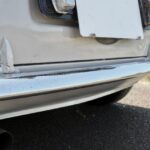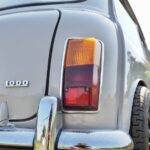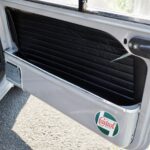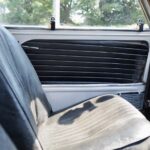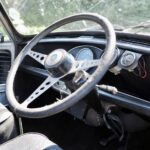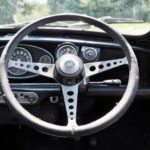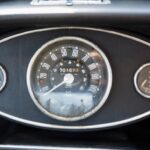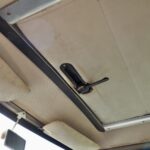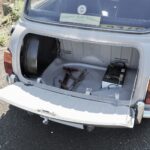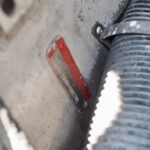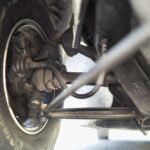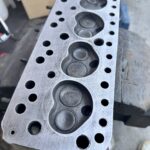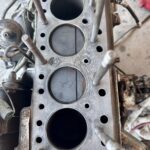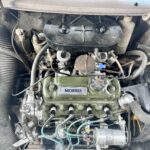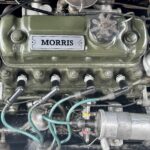TOP>Stock List>1968model Morris Mini Cooper Mk-II 1000
1968model
Morris Mini Cooper Mk-II 1000

↑↑↑Please watch the archived video above with audio if possible...
A timeless dream sealed within steel—an authentic final-generation icon that radiates pure aura and emotion…! After a complete engine overhaul, body restoration, and full repaint in its original color, this 1968 Morris Mini Cooper Mk-II 1000 has been reborn for the modern era—its slightly shabby, lived-in atmosphere only deepens its irresistible charm…!
“An Endless Dream in the Garage…”
It’s an incurable lifelong condition—one only true car enthusiasts can understand. For them, the greatest joy lies not merely in driving, but in the process of bringing a treasured classic back to life—patiently refining it into their own ideal machine.
As classic car values continue to soar worldwide, more and more enthusiasts are devoting themselves to the pleasure of restoration itself, rather than simply the pleasure of the drive. Indeed, many have happily “caught” this delightful, incurable obsession.
The car featured here is a perfect embodiment of that endless dream within the garage.
Before me stands a 1968 Morris Mini Cooper Mk-II 1000, its engine-bay identification plates quietly revealing the car’s authentic story.
Chassis number KA2S6-1220538A, commission number 250S-10577A, and an aged yet barely legible engine number 9F-TA-H987—these markings tell us everything.
Cross-checking with BMC (British Motor Corporation) production records confirms that this car was built as a genuine 998cc high-compression Cooper on the original assembly line.
The code KA2S6 denotes a Morris-branded (K) two-door saloon (A2S6) in the 998cc Mk-II Cooper specification.
The subsequent commission number 250S-10577A refers to the secondary plate affixed after body completion, part of the Cooper-exclusive “250S” sequence—indicating that this particular example was built at the Abingdon factory as an authentic Cooper.
Though time has softened the stampings, the engine number 9F-TA-H987 remains partially readable.
Here, “9F” identifies a Mini Cooper 998cc unit, “TA” designates the high-compression Cooper specification, and “H” signifies a 4-speed manual gearbox.
In short, this vehicle is a true matching-numbers 1968 Morris Mini Cooper Mk-II 998cc—an increasingly rare survivor retaining its complete original identity.
Imported directly from the UK in 1994, this precious canvas-top example remained largely original, showing 70,167 miles at the time of our inspection. It has clearly woven itself into the colorful life of its previous owner before passing into new hands.
Under the care of the current owner, the car was temporarily deregistered in February 2025 (Reiwa 7) for restoration.
The aging body was refreshed and fully repainted in what appears to be its original Smoky Grey—likely the period-correct and highly popular Smoke Grey of the era—paired with a pale ivory roof.
The subtle contrast between the soft hues complements the Mini’s rounded classic form beautifully.
Devoid of modern accessories—no door mirrors on the front sliding windows, for instance—this Mini exudes the unfiltered aura of a car that could still be found running through the streets of Britain.
As for the engine overhaul, the recently completed work includes:
- Replacement of the head gasket
- New piston rings
- Transmission bushing replacement
- New engine mounts
- New universal mounts
- Complete engine repaint
The drivetrain and auxiliary systems also received thorough attention, preserving originality while reviving the spirited character of the Mk-II Cooper:
- New front drive universal joints
- Thermostat replacement
- Jet replacement for the Cooper TA-spec twin SU carburetors
- Radiator replacement
To complete the setup, brand-new Dunlop SP Sport R7 (165/70R10) tires have been fitted to the 10-inch wheels—ready for an authentic classic Mini Cooper driving experience.
Another delight lies in the interior, which remains wonderfully original despite the mechanical refresh.
Even as-is, the car radiates a timeless charm. Yet one could easily imagine polishing the original, tear-free seats, re-trimming the slightly tired carpets with genuine replacements, carefully restoring the gently aged steering wheel, and bringing back the luster of the lightly clouded grille—all subtle touches that would enhance the car’s authentic character without erasing its history.
Such care would allow this true original Mini Cooper to continue brightening the life of its next custodian for years to come.
Let us now delve deeper into the history of the Mk-II, and explore just what makes this 1968 Morris Mini Cooper 1000 such a captivating survivor…
Would you like me to format this in a classic car magazine style (with section headings and emphasis on storytelling and emotion), or keep it as a faithful literal translation suitable for a sales listing or catalogue entry?
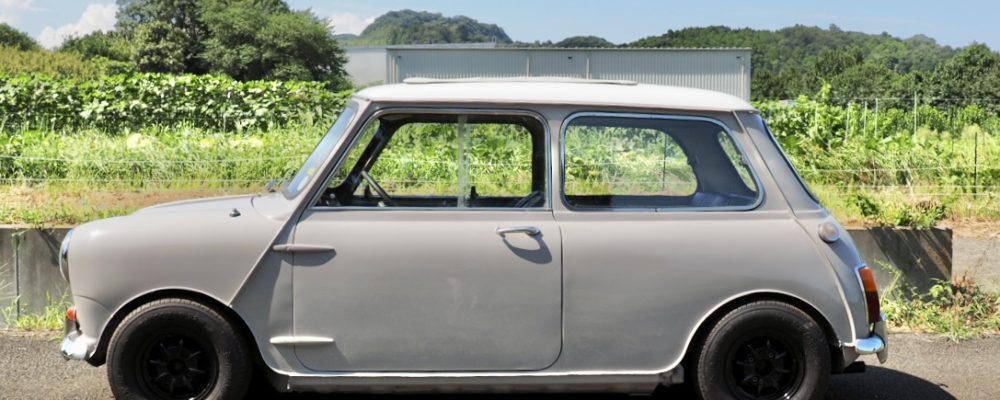
Sir Alec Issigonis’s century-defining masterpiece…! From the revolutionary story of the Mini’s creation to the birth of the Mk-II— this is what the authentic Morris Mini Cooper Mk-II 1000 was all about…!
The Mini — its wheels pushed boldly out to each corner, embodying the essence of a go-kart — is a car that never fails to delight. No matter the model year or specification, whether in stock form or tastefully customized, few cars make the basic acts of driving, braking, and steering feel so purely joyful.
It’s little wonder that many seasoned enthusiasts, after owning numerous sports and GT cars, choose this simple yet profoundly engaging machine as their “final car in life.”
Codenamed ADO15, the Mini was born in 1959 under the names Austin Seven and Morris Mini Minor. Over nearly half a century, it captured the hearts of enthusiasts worldwide, with an astounding 5,387,862 units produced before the end of its run in 2000 — a true masterpiece by its creator, Sir Alec Issigonis.
In postwar Britain of the late 1950s, as the nation began to recover and prosperity beckoned, the Suez Crisis struck — triggering the first oil shock. Rising fuel prices and shrinking demand for large-displacement cars sparked a new need: “a smaller, smarter car.”
Issigonis, then an engineer at BMC (British Motor Corporation), responded with radical thinking. He designed a compact body just 10 feet long (about 3 meters) that could comfortably seat four adults. His genius lay in the transverse-mounted engine with front-wheel drive, the world’s first of its kind.
By integrating the gearbox beneath the engine and pushing the wheels to the very corners, he achieved both an astonishingly spacious cabin and exceptionally nimble handling. Thus, in 1959, two small cars that would change the world were born: the Austin Seven and the Morris Mini Minor.
Though tiny, the Mini had a huge presence. It quickly captured the hearts of the British public — from royalty to students, from the working class to celebrities — a true social phenomenon.
But it was John Cooper, the race-car constructor, who turned this clever small car into a legend.
Recognizing its superb handling, Cooper developed the Mini Cooper in 1961. Despite its modest sub-1000cc engine, it dominated the rally world. The legendary duel with Porsche at the Monte Carlo Rally’s Col de Turini became a symbol of the “giant killer” — a small car overtaking mighty sports machines in the snow — earning the Mini everlasting glory as “the small giant.”
By late 1967, riding on the immense success of the first-generation Mk-I (1959–1967), the Mk-II was born. More than a facelift, it represented the mature, perfected form of the Mini.
Visually, the Mk-II received a redesigned rear panel and larger square tail lamps to meet new safety standards, with the license plate moved lower.
A new horizontal-slat grille lent a modern appearance, the oval bonnet badge proudly spelled out “Morris Cooper,” and a rain channel around the windshield improved weather protection. Structurally, the body was reinforced, subframe mounts stiffened, heater performance enhanced, and switch layout improved — even the trunk space grew slightly.
Yet the core philosophy of size and lightness, sacred to Issigonis, remained untouched.
With its sub-600kg body and the sharp, high-compression 998cc engine, the Mk-II delivered electrifying response — this was its essence.
The 998cc “9F-TA-H” engine in the Morris Mini Cooper Mk-II 1000 was an exclusive high-tune unit, featuring twin SU carburetors and a cross-flow head producing a then-remarkable 55 horsepower.
In a 10-foot body, it drove like a pure racing kart — a thrilling, “horse-and-rider-as-one” experience that reignited passion among enthusiasts.
Another charming detail lay in the subtle differences between Morris and Austin variants:
the Morris Cooper employed more refined chrome accents and a classically British aura, while the Austin Cooper leaned toward a sportier image.
Thus, examples bearing the Morris nameplate — like the one introduced here — embody the most authentic and elegant expression of British motoring design.
By 1968, the Mk-II Cooper reached its final chapter. In 1969, the Cooper badge disappeared temporarily, leaving only the Cooper S in production.
This makes the Mk-II Cooper 1000 the last true Cooper born under the BMC banner — the final chapter of the original Mini Cooper story.
Many Minis were modified or carelessly treated over the decades, and fully original examples are now exceedingly rare — even in the UK.
That is why the specimen with Chassis #KA2S6-1220538A / Commission #250S-10577A / Engine #9F-TA-H987 stands as a genuine survivor — an irrefutable testament to what a true Morris Mini Cooper Mk-II 1000 really is.
Would you like me to format this as a magazine editorial feature (with subheadings, emphasis, and flow like a printed article), or keep it in classic listing style (clean paragraphs for catalog or website use)?

The breath of Britain reborn in a garage… The 1968 Morris Mini Cooper Mk-II 1000—a final-generation authentic survivor revealing its true character.
On a scorching midsummer day, under the blazing sun, the Mini that emerged before us exuded a warmth and presence that belied its six decades of age.
Its body—recently refinished in the original Smoke Grey—carried a subdued, elegant sheen, perfectly complemented by a soft ivory roof that created a refined contrast.
Each glint of sunlight revealed the gentle patina of time: the chrome grille, still bright yet softened by age; the front and rear bumpers; and the rare period British badges—all alive with the quiet dignity that only time can bestow.
This restoration had not been overdone—it was “just enough.” That sense of restraint gave the car the aura of one freshly driven out of 1960s Britain, its minimalist authenticity radiating even through the clear glass that framed the interior’s quintessentially English aesthetic.
Notably, this particular car retains the original UK specification, still without a rearview mirror—a requirement only for modern Japanese inspections and road use—giving it an unfiltered, distinctly British face.
Its external door hinges, sliding windows, and manual canvas sunroof each tell silent stories of more than half a century past. Yet, at the same time, they hint at “the joy of continuing the restoration,” inviting the next caretaker to take part in that creative process.
Mechanically, the car features a recently overhauled 998cc engine, as described earlier.
With new head gasket, piston rings, and mounts, the engine has been repainted and neatly detailed.
From idle, it emits that bold, classic growl—the deep, throaty intake of the twin SU carburetors (TA spec) echoing beautifully.
The cooling system has been refreshed, the radiator and universal joints replaced, leaving a strong foundation for further refinement.
A look beneath the car reveals no oil leaks—the oil pan remains dry—and the lower body and door sills have been cleanly repaired, showing that this Mini has been expertly revived from its long slumber.
It now wears brand-new Dunlop SP Sport R7 (165/70R10) tires.
While the narrow, overfender-less body leaves the tires slightly proud of the arches—something that may require adjustment for future inspections—the pure 10-inch wheel stance perfectly captures the nimble, lightweight spirit that defines the Mini.
Inside, time appears to have stood still.
The original seats and trim, untouched and unrestored, convey the feel of late-1950s design the moment you sink into them.
Overhead, the original canvas sunroof opens smoothly with a single lever—a moment of pure nostalgia.
Even the rain gutters around the roof remain rust-free, a testament to its careful preservation.
As mentioned before, this car is already immensely charming as it stands.
Yet, the opportunity to polish, refresh, and subtly perfect it only deepens its appeal.
This is the true essence of “unfinished beauty”—the endless dream within the garage.
It is precisely this quiet brilliance, this sense of life still unfolding, that defines the classic Mini lifestyle… and the soul of this 1968 Morris Mini Cooper Mk-II 1000.
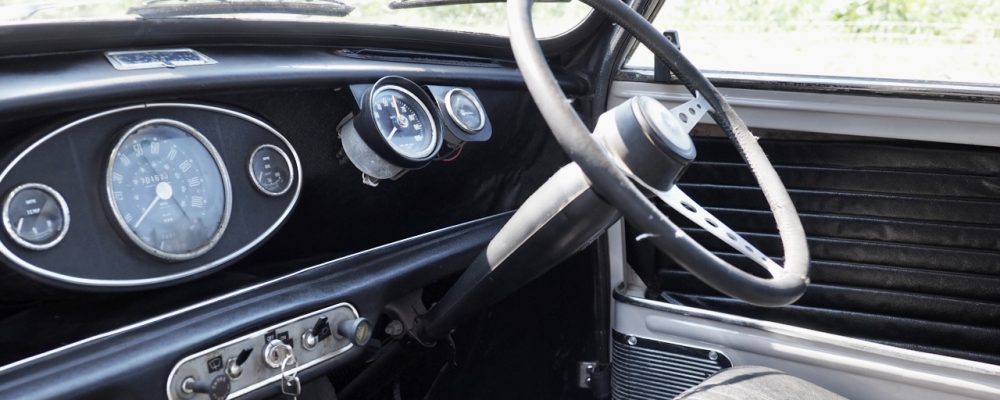
Postscript — 1968 Morris Mini Cooper Mk-II 1000
Awakened from a long slumber, this car was first repainted entirely in Smoke Grey, faithfully recreating the atmosphere of its era.
However, during our initial interview, the engine did not rev freely—there was a noticeable unevenness across the cylinders, and to be frank, I felt it clearly needed proper tuning, including adjustment of its twin SU carburetors.
The reason some time passed between the interview and this publication is that, upon hearing those impressions, the current owner made an immediate decision—right there—to fully overhaul the engine.
A few weeks later, detailed photos, notes, and videos of the rebuild arrived from the owner, showing the remarkable transformation that brought us to this feature today.
“I think… if it were mine, I’d keep the patina of age as it is, polish each detail carefully, and simply drive it as is.”
That was my honest thought. And yet, imagining how extraordinary it could become if brought to complete perfection—the dream only grows.
Indeed, the phrase “an endless dream within the garage” could not describe it better.
If we are to accept that being hopelessly in love with cars is a lifelong, incurable condition… then this Mini is surely the kind of machine that makes you want to confront that passion wholeheartedly, and patiently craft your ideal car for life.
Shaken by the presence of a true survivor radiating pure authenticity— a final, genuine icon that captures an endless dream within its steel. After a full engine overhaul, body restoration, and complete repaint in its original color, this 1968 Morris Mini Cooper Mk-II 1000 has been reborn for the modern era— a car that oozes irresistible, timeworn charm with every glance.
Its slightly shabby patina, far from imperfection, tells a story:
a quiet testament to decades of care, passion, and revival.
This is not just a restored Mini—it’s a living memory of Britain’s golden age of motoring,
a machine that stirs both admiration and emotion the moment you stand before it.
We warmly invite you to make your dream a reality—
to come and experience, in person, a piece of genuine British motoring culture brought back to life.
This visit will be more than a viewing; it’s a rare opportunity to feel, hear, and breathe the craftsmanship and spirit that defined an era.
Please, step into this timeless space—
where the 1968 Morris Mini Cooper Mk-II 1000 awaits,
quietly radiating the enduring charm of the United Kingdom’s automotive heritage.
Because this is a private individual sale, no consumption tax or additional dealer fees apply.
For this vehicle, settlement of the automobile tax on a pro-rated basis (unnecessary since the car is currently deregistered) and recycling deposit fee adjustment (unnecessary as it has not yet been prepaid) will be the responsibility of the purchaser.
Similarly, transportation or delivery arrangements should be made by the buyer; however, my company also operates a classic-car transport service using our own enclosed carrier truck—please feel free to inquire if you wish to use this option.
About Inquiries
This vehicle is listed on the cross-border classic & collectible car EC platform “Estate Sale Supremacy®.”
What is an Estate Sale Supremacy®?
It is the Japanese adaptation of the North-American estate-sale culture, introducing each owner’s cherished vehicle through detailed interviews, writing, and video storytelling.
We faithfully convey the current owner’s thoughts and memories, while ensuring a smooth and respectful handover of the car to the next generation.
All listings include detailed interviews covering maintenance history, repair records, and accident background.
If any major accident history exists, or if the ownership history is too short to verify the car’s details, we decline publication—prioritizing transparency and buyer confidence above all.
About This Article
This article was written based on a three-hour on-site interview conducted with the owner on August 19, 2025, under clear summer skies.
Because the inspection occurred within limited time, the description may not represent the vehicle’s current condition with 100 percent accuracy.
Comments on mechanical or cosmetic condition reflect only the author’s personal impressions under the observed weather and lighting at the time of inspection.
For Prospective Buyers
Questions or requests to view the vehicle in person can be made using the contact form at the bottom of this page.
As this is a private transaction, and to prevent casual viewing, we ask that inspection requests be limited to customers who are seriously considering purchase.
We sincerely appreciate your understanding—and invite you to consider this remarkable classic as part of your own motoring story.














